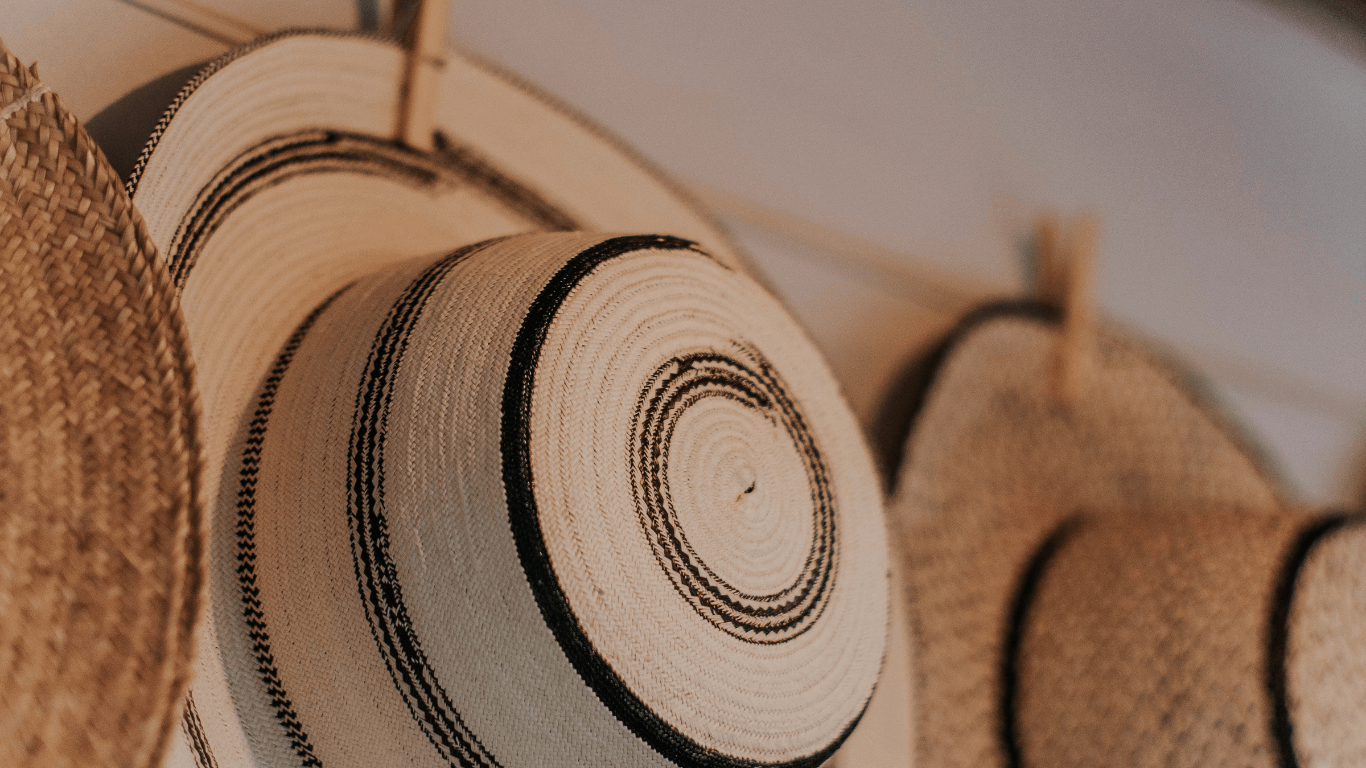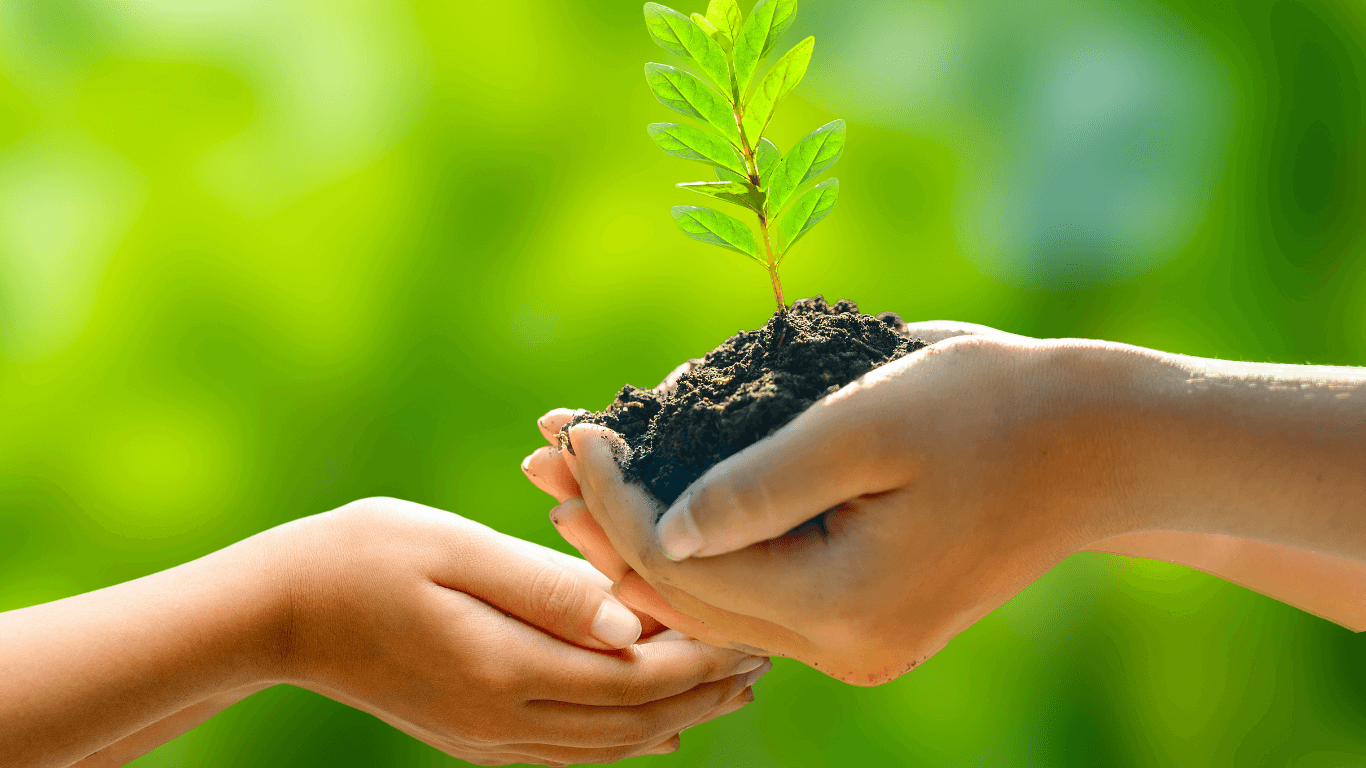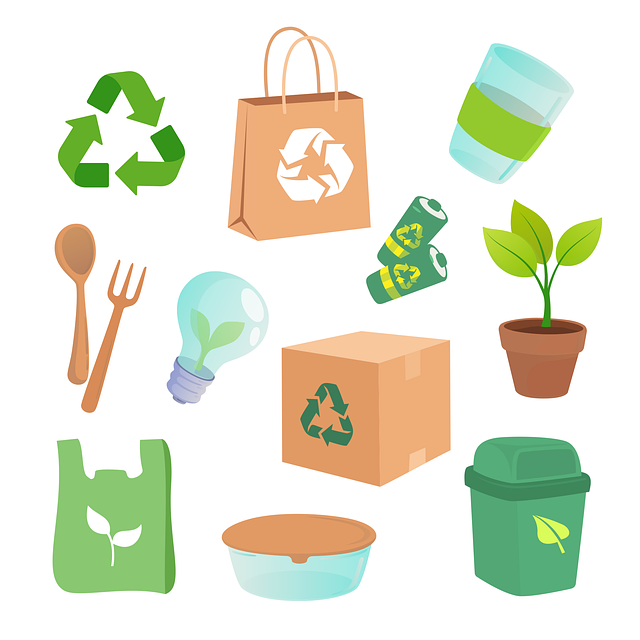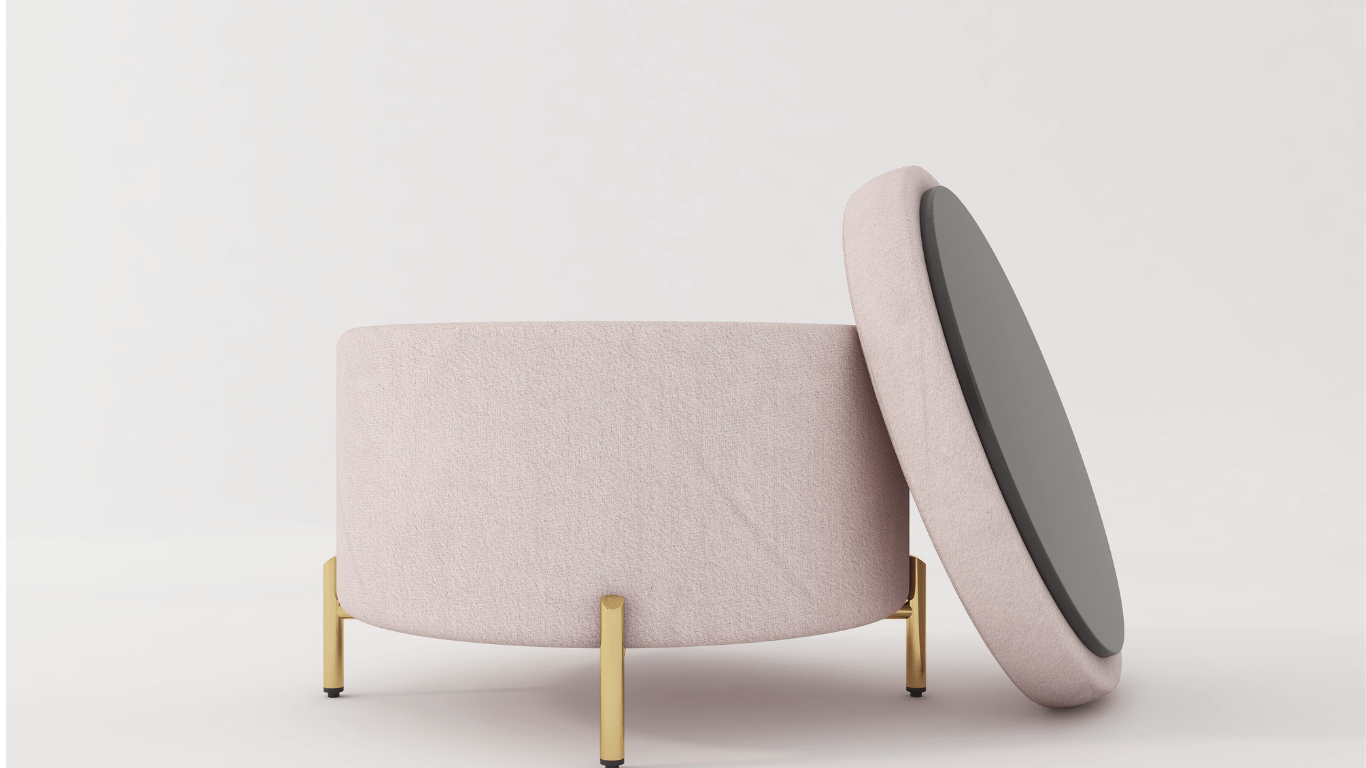Innovative eco-friendly straw hats represent a significant shift in sustainable fashion.
These products combine traditional craftsmanship with innovative, environmentally responsible materials that meet growing consumer demand for sustainable options without compromising on style or functionality.
Key Hat Features of Eco-Friendly Straw Hats:
-
Diverse Materials: Incorporation of innovative materials like hemp, Piñatex, and recycled fibers transforms the hat-making process.
-
Sustainable Choices: These hats not only provide stylish options but also support responsible sourcing and ethical production practices.
-
Environmental Impact: By utilizing renewable resources, paper straw hats help reduce carbon footprints and promote biodegradability.
Innovative Eco-Friendly Straw Hats
The emergence of these innovate paper straw hats reflects a broader trend in the fashion industry towards sustainability. Consumers increasingly seek out products that balance aesthetic appeal with environmental responsibility.
This new wave of fashion accessories offers a stylish way to make a positive impact on the planet while embracing individuality and creativity.

Traditional Straw Materials
Traditional techniques of straw hats have long been crafted from a variety of natural fibers, each offering unique qualities suited for different personal style and climates.
Common materials include:
-
Wheat Straw: Lightweight and flexible, wheat straw is often used for its affordability and ease of shaping. Provides agricultural communities with additional income sources (Textile Research Journal, 2020)
-
Rice Straw: Known for its durability, rice straw provides a sturdy yet breathable option, making it ideal for sunny days and warmer climates. (Studies from the International Journal of Sustainable Materials)
-
Seagrass: This coastal material adds a touch of natural elegance, contributing to the lightweight nature of the hats while remaining biodegradable. According to research from Sustainable Textiles Coalition, seagrass offers natural water resistance and biodegrades completely within 12-24 months in proper composting conditions.

The use of these organic cotton fibers brings several advantages:
-
Breathability: Natural fibers allow air circulation, keeping the head cool under warm conditions. This characteristic makes them popular during summer months.
-
Lower Carbon Footprint: Sourced from renewable resources, traditional materials typically have a smaller environmental impact compared to synthetic alternatives.
When comparing organic fibers to synthetic options like polyester, significant differences emerge. While polyester offers enhanced durability, it comes with considerable environmental costs associated with fossil fuel extraction and production processes.
The contrast between these materials highlights an ongoing conversation in the fashion industry about sustainability and responsible consumption practices in hat manufacturing.
The Shift to Synthetic Alternatives
The rise of synthetic materials, particularly polyester, has transformed the fashion industry, including the realm of straw hats.
These materials provide notable advantages:
-
Durability: Synthetic fibers are designed to withstand wear and tear. Sun Hats made from polyester can resist fading and maintain their shape over time, making them an appealing choice for consumers seeking longevity in accessories.
-
Environmental Concerns: Production of synthetic straw materials:
- Consumes 2-3 barrels of oil per ton of material produced
- Generates approximately 5.5kg of CO₂ emissions per kilogram of material
- Creates microplastic shedding throughout the product lifecycle
- Results in non-biodegradable waste with a decomposition timeline of 20-200 years
Sources: European Environment Agency 2025; Textile Sustainability Report, May' 25
Despite these benefits, environmental concerns accompany the production of synthetic hats. The reliance on fossil fuels during traditional hat making techniques contributes significantly to their carbon footprint.

This process involves extracting crude oil, which not only depletes non-renewable resources but also emits greenhouse gases that have detrimental effects on the environment.
In light of these issues, many consumers and manufacturers are reevaluating their choices. The focus is shifting towards innovative green friendly alternatives that do not compromise on quality or style while addressing sustainability concerns.
The future of fashion accessories like straw hats hinges on balancing durability with environmental responsibility, paving the way for more sustainable practices in the industry.
Innovative Eco-Friendly Materials for Straw Hats
The evolution of the straw hat embraces a range of sustainable resources that challenge traditional options.

These innovative green friendly materials not only enhance the aesthetic appeal but also prioritize environmental responsibility.
Here are some of the innovative eco-friendly resources being used in natural materials of straw hat production:
-
Hemp: Celebrated for its exceptional durability, hemp grows rapidly and requires minimal resources. This plant thrives without pesticides, making it an green friendly choice with a significantly lower environmental impact.
-
Bamboo: Known for its fast growth, bamboo flourishes quickly, needing little water and no chemical fertilizers. This renewable resource is becoming popular in fashion for its lightweight properties and soft texture.
-
Piñatex: Crafted from pineapple leaf fibers, Piñatex offers both flexibility and strength. This innovative textile transforms agricultural waste into stylish accessories, promoting sustainability within the fashion industry.
-
SeaCell: A unique blend of seaweed and eucalyptus fibers, SeaCell boasts biodegradable properties. This material not only adds a touch of luxury but also infuses garments with beneficial properties derived from the ocean.
-
Recycled Materials (PET): The integration of recycled plastic bottles into hat production addresses waste management concerns. By repurposing resources that would otherwise contribute to landfills, brands can create fashionable items while conserving resources.

These resources represent a significant step forward in the quest for sustainable fashion, redefining what it means to wear a straw hat.
Sustainable Practices in Hat Manufacturing
Adopting sustainable practices in straw hat manufacturing is crucial for the eco-friendly straw hat industry.

Key components include:
1. Responsible Sourcing
Brands prioritize sourcing resources from suppliers who adhere to sustainable practices, ensuring that raw materials are obtained without harming the environment or exploiting labor.
This commitment fosters inventory and supply chain management that supports environmental awareness, local communities and encourages biodiversity.
2. Ethical Manufacturing
Manufacturers are increasingly focusing on fair labor standards, ensuring safe working conditions and fair wages for workers involved in the production process.
By maintaining ethical standards, companies contribute to a more equitable fashion industry.
3. Zero-Waste Practices
Innovative brands implement zero-waste manufacturing processes that optimize fabric patterns to minimize offcuts.

Techniques such as upcycling are utilized to transform leftover resources into new products, reducing waste and encouraging creativity in design.
These practices not only enhance the sustainability of green friendly straw hats but also align with growing consumer demand for transparency and responsibility.
As the ethical fashion industry evolves, these principles will play a vital role in shaping a more sustainable hat future.
Sources: Fashion Revolution Transparency Index, 2024; Sustainable Apparel Coalition, 2023
Consumer Demand for Eco-Friendly Options in Fashion Industry
The rise of sustainable consumerism has transformed the fashion choice landscape, with consumers increasingly seeking green friendly alternatives.

This shift is particularly evident in the hat sector, where innovative resources are gaining traction.
Key factors driving this trend include:
-
Informed Choices: Consumers are more aware of environmental issues and actively seek products that align with their values.
-
Diversity of Options: The availability of stylish, eco-friendly paper straw hats made from sustainable materials like hemp and Piñatex appeals to fashion-conscious shoppers.
Brands are responding to this demand by adopting transparent sourcing practices.
This entails:
-
Fair Trade Focus: Companies prioritize ethical production methods that ensure fair wages and working conditions for laborers.
-
Environmental Responsibility: Many fashion brands are committed to reducing their carbon footprint through sustainable sourcing, recycling initiatives, or using biodegradable materials.
As a result, the emphasis on green friendly products not only fulfills consumer desires but also encourages brands to innovate continually.
This evolving dynamic signifies a promising shift towards sustainability in the fashion industry, proving that style does not have to come at the expense of environmental health.
Care and Maintenance Tips for Long-lasting Eco-Friendly Straw Hats
To keep your eco-friendly straw hats looking great for years to come, it's important to take care of them properly.

Here are some simple cleaning and storage tips that will help you maintain their quality without using any harsh chemicals.
Recommended Cleaning Techniques
-
Gentle Spot Cleaning: Use a soft, damp cloth to gently dab at stains. Avoid rubbing, as this can damage the fibers.
-
Mild Soap Solution: Mix a small amount of mild soap with water. Dampen a cloth with this solution and carefully clean the affected areas.
-
Air Drying: After cleaning, allow your hat to air dry naturally away from direct sunlight to prevent fading or warping.
Best Practices for Storage
-
Cool, Dry Place: Store your straw hats in a cool, dry environment to avoid moisture buildup that could lead to mold.
-
Hat Boxes or Racks: Utilize hat boxes (for example in Product boxes-L) or racks to maintain shape. If using a box, line it with acid-free tissue paper for added protection.
-
Avoid Crushing: Keep your hat away from heavy items that could cause deformation.

By following these care techniques, you can ensure that your green friendly straw hats stay in excellent condition and continue to be a stylish accessory for any outfit.
Styling Eco-Friendly Straw Hat: Versatile Looks for Every Occasion
Discover how to style your eco consciousness straw hatfor different settings:
-
Beach Vibes: Pair with a sundress or shorts and a tee for a relaxed, beach-ready look.
-
Urban Chic: Combine with a tailored blazer, jeans, and ankle boots for a polished city outfit.
-
Countryside Retreat: Match with a linen shirt, chinos, and loafers for a laid-back rural vibe.
-
Tropical Getaway: Wear with a vibrant maxi dress and sandals for a holiday look.
-
Festival Fun: Go boho with denim shorts, a fringed vest, and ankle boots for festival style.

Our organic cotton hat offer not just style, but sustainability and excellent sun protection, making them the perfect accessory for any adventure.
Why Choosing Innovative Eco-Friendly Straw Hats
Eco-Friendly Design: Sustainable fashion with innovative combination of straw and recycled paper.
Outstanding Good Sun Protection: Many green friendly straw hats styles feature a UPF 50+ rating, providing excellent defense against harmful UV rays.
Water-Resistant Construction: Whether facing a light drizzle or a sudden downpour, sustainable hats are crafted to resist water, ensuring durability.
Artisan Craftsmanship: Each hat showcases a unique blend of hand braiding and steam blocking, resulting in a true masterpiece of traditional hat-making artistry.
Summary
The future of fashion sustainability is being shaped by innovative approaches to materials and manufacturing practices.
By choosing eco-friendly straw hats, consumers actively participate in this eco friendliness transformation.
-
Informed Choices: Selecting stylish accessories made from sustainable materials helps reduce environmental impact.
-
Support Ethical Practices: Opting for brands that prioritize responsible sourcing and ethical production fosters a more sustainable industry.
-
Fashion Meets Functionality: Cutting edge sustainable straw hats offer durability, style, and a commitment to the planet.

Embrace this movement towards a more sustainable wardrobe. The journey begins with simple choices.
Make every accessory count in creating a positive change for our environmental fashion statements awareness.
Let`s start with eco friendly straw hat practices today and check Eric Javits innovative eco-friendly straw hats collection!
About the Author: This article was prepared by the Sustainable Fashion Eric Javits Team, led by Eric Javits. The team conducts independent research on environmental impacts of fashion accessories and consults with manufacturers on improving sustainability metrics.
























